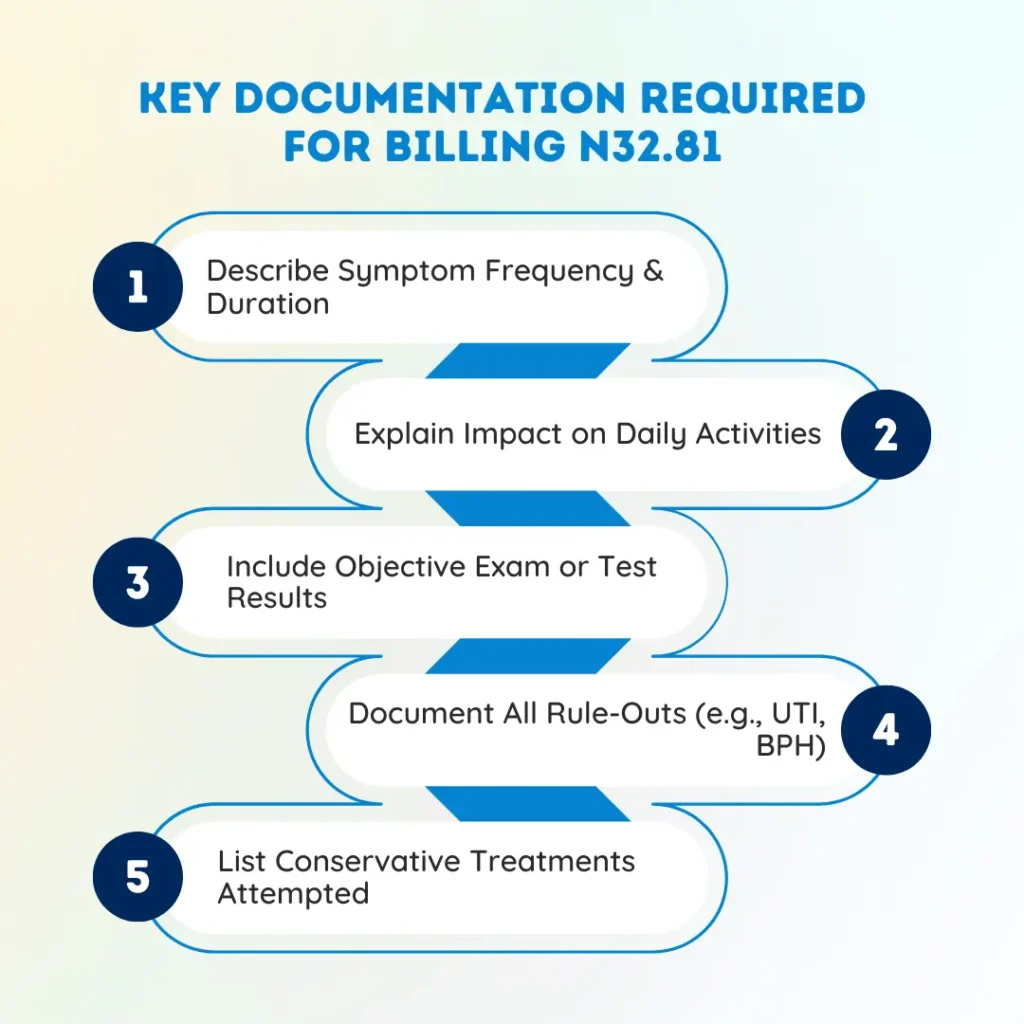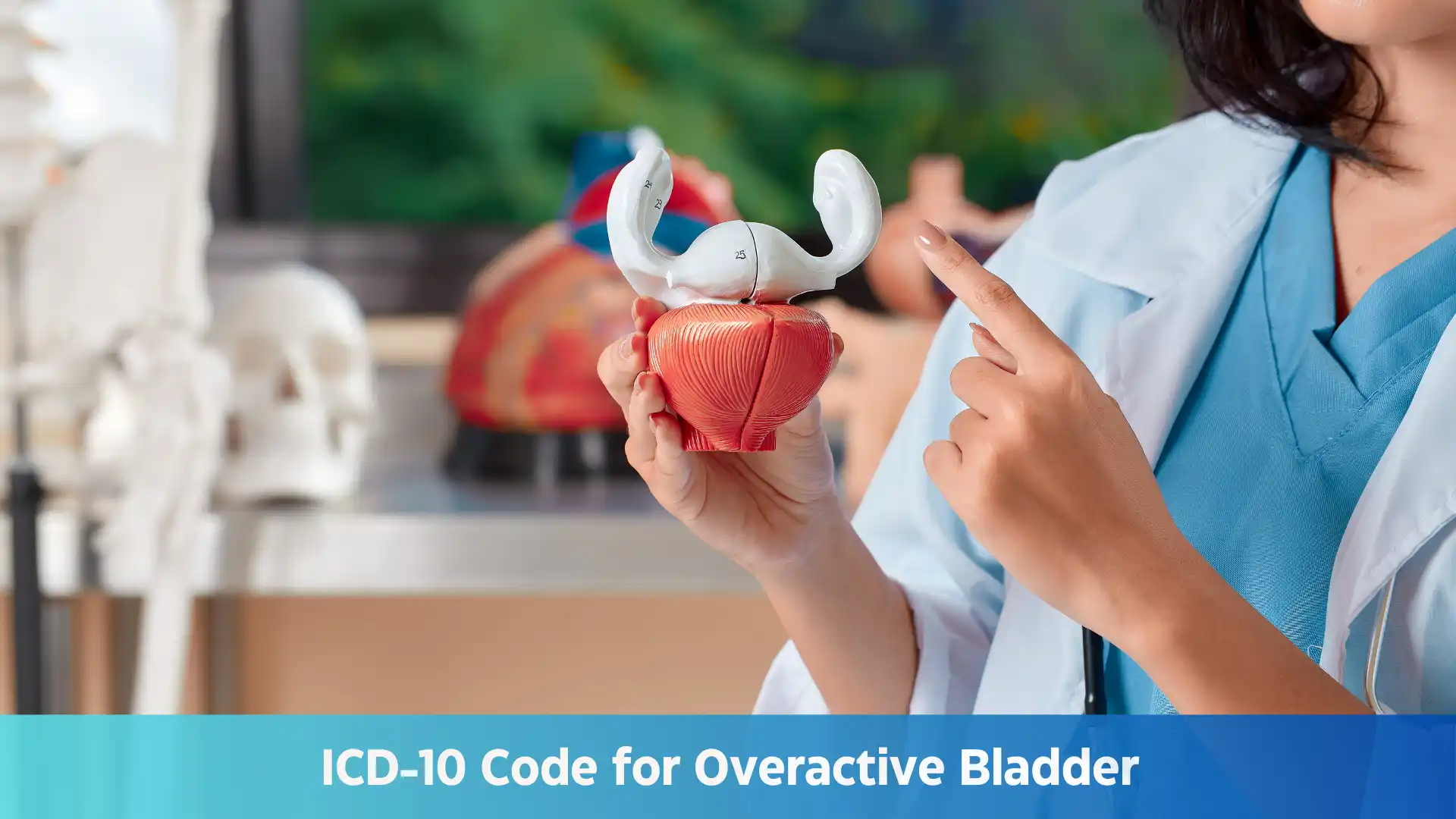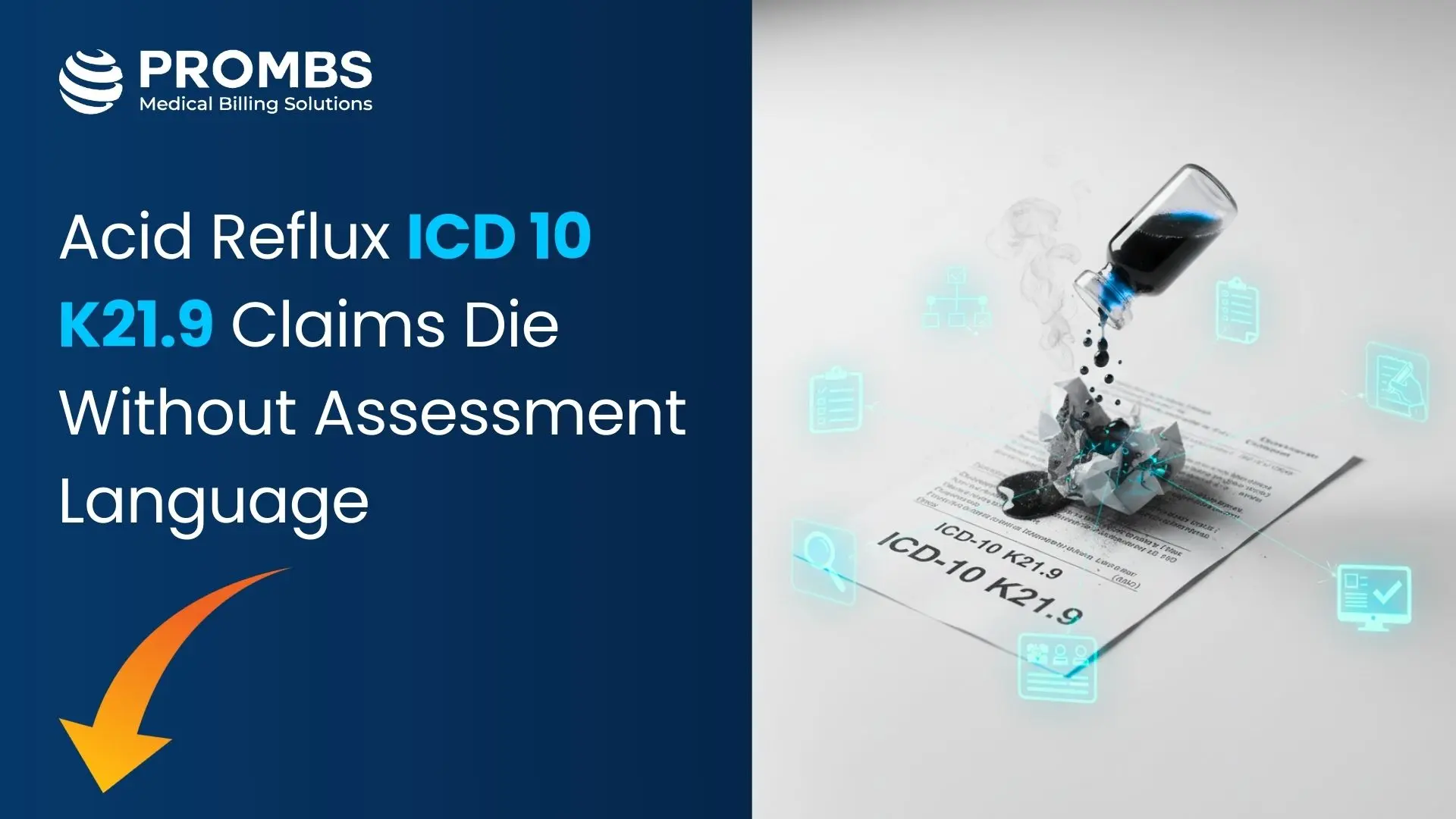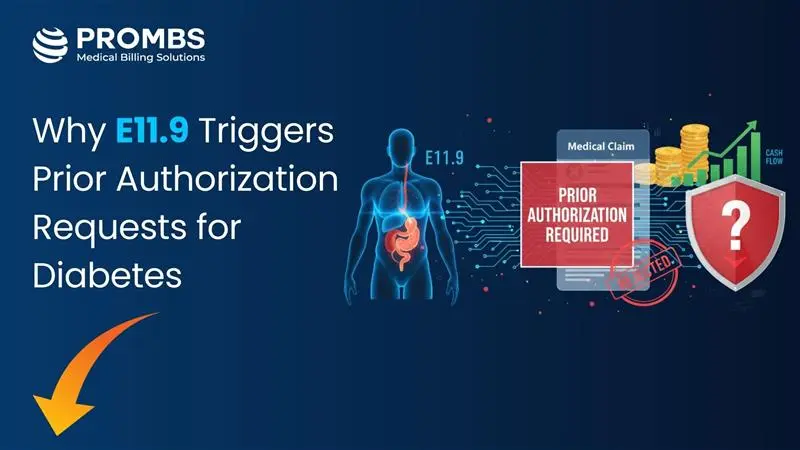Introduction
According to the Cleveland Clinic, overactive bladder (OAB) affects up to 33 million adults in the U.S., including as many as 30% of men and 40% of women. Despite being so common, billing for OAB often results in confusion, incorrect ICD-10 coding, and claim denials. Whether you're a urologist, a primary care provider, or a medical billing specialist, understanding how to use the ICD 10 Code for Overactive Bladder (N32.81) is essential for submitting clean claims, avoiding audits, and receiving timely reimbursement.
This guide will walk you through:
- The clinical definition of overactive bladder
- Correct usage of ICD 10 Code for Overactive Bladder (N32.81)
- Key documentation requirements
- Common coding pitfalls and payer denial triggers
- How to differentiate OAB from other urinary disorders
What is Overactive Bladder?
Overactive bladder is a urological condition characterized by sudden urges to urinate, frequent urination, nocturia (waking up at night to urinate), and in some cases incontinence. It is considered a symptom complex rather than a single disease.
- Common Symptoms Include:
- Urinary urgency
- Frequency (typically >8 times/day)
- Urge incontinence (involuntary leakage)
- Nocturia
Overactive bladder can occur with or without underlying pathology. Its diagnosis requires a thorough clinical history and often a urodynamic study to rule out mechanical obstruction, infections, or neurological causes.
ICD-10 Code for Overactive Bladder
The official ICD-10-CM code for overactive bladder is:
ICD-10 Code: N32.81 — Overactive bladder
Code Details:
- Chapter: XIV — Diseases of the Genitourinary System (N00–N99)
- Block: N30–N39 — Other diseases of the urinary system
- Code Type: Final-level ICD-10-CM diagnosis code used for reimbursement purposes
- Effective Year: October 1, 2024 (ICD-10-CM Fiscal Year 2025)
This final-level code remains unchanged in the 2025 ICD-10-CM updates and is valid for all claims with dates of service on or after Oct 1, 2024.
This code is used when a diagnosis of OAB has been confirmed and documented without attributing the symptoms to another specific condition (e.g., UTI, BPH, or neurogenic bladder).
Differential Diagnosis: How ICD-10 Code N32.81 Differs from Similar Codes
| Condition | ICD-10 Code | Description |
|---|---|---|
| Overactive Bladder | N32.81 | Urinary urgency, frequency, ± urge incontinence |
| Urinary Urgency | R39.15 | Symptom only, no confirmed diagnosis |
| Neurogenic Bladder | N31.9 | Bladder dysfunction due to neurological cause |
| Stress Incontinence | N39.3 | Leakage during physical activity, not urgency |
| Urinary Tract Infection (UTI) | N39.0 | Due to bacterial infection; must rule out |

✅ Symptom Frequency and Duration
Describe how often and how long the patient has been experiencing symptoms. Use specific, quantifiable language.
Example: “Patient voids 10 times during the day and 3 times at night for the past 4 weeks.”
✅ Impact on Daily Life
Explain how OAB symptoms affect the patient's quality of life or daily function. This helps justify why evaluation or treatment is necessary.
Example: “Patient reports urgency interfering with work and social activities.
✅ Objective Findings or Exam Results
Include results from urodynamic testing, physical exams, or post-void residual measurements when available.
These support the diagnosis and show clinical workup.
Example: “Urodynamic study shows detrusor overactivity consistent with OAB.”
✅ Rule-Outs of Other Conditions
Document that other potential causes of similar urinary symptoms such as urinary tract infections (UTIs), benign prostatic hyperplasia (BPH), or neurologic disorders have been thoroughly evaluated and ruled out. Your clinical notes should clearly support why the ICD 10 Code for Overactive Bladder (N32.81) was selected instead of related symptom-based codes like R39.15 (Urinary Urgency) or N39.0 (UTI).
Example: “UA negative for infection; PVR normal; no neurologic signs on exam.”
✅ Conservative Treatments Attempted
Before billing for advanced therapies, show that initial, non-invasive treatments were tried.
Include:
- Lifestyle modifications (fluid restriction, bladder training)
- Medications (anticholinergics, beta-3 agonists)
- Behavioral therapy or pelvic floor exercises
This shows you followed standard treatment protocols before escalating care.
Coding Scenarios for OAB with Treatment Plans
| Scenario | ICD-10 | CPT | Notes |
|---|---|---|---|
| OAB diagnosed, managed with medication | N32.81 | 99213 | Office visit + prescription |
| OAB with urodynamic testing | N32.81 | 51741, 51784 | Diagnostic tests must be linked to N32.81 |
| OAB with bladder botox injection | N32.81 | 52287 | Requires prior authorization from most payers |
Modifier and Payer Considerations
- Modifiers: Usually not needed when billing E/M visits alone. Use -25 if billing both E/M and procedures.
- Telehealth: OAB visits via telehealth must include POS 02 or 10 and modifier -95.
- Prior Authorization: Required for Botox (52287), PTNS therapy, or multiple urodynamic studies in a benefit year.
Always confirm that your documentation supports the use of the ICD 10 Code for Overactive Bladder, especially when submitting claims that include procedures or require prior authorization.
How to Prevent Denials When Coding ICD-10 Code N32.81
1. Using R39.15 Instead of N32.81
2. Missing Documentation for Medical Necessity
Incomplete chart notes are a leading reason for claim rejections. Providers must include a detailed HPI, note failed conservative treatments, and document how symptoms impact quality of life. This data supports the necessity for diagnostic testing or procedural interventions.
3. Incorrect CPT Codes for Therapy
Using general psychotherapy codes (e.g., 90834, 90837) for OAB-related behavioral interventions is inappropriate. These codes are designated for mental health services, not bladder dysfunction. Instead, use codes like 90911 (biofeedback) or 97110 (therapeutic exercises) as applicable.
4. Skipping Urodynamic Testing Before Procedures
Advanced treatments like Botox often require a completed diagnostic pathway, including urodynamic studies (51741, 51784). Omitting these tests can cause prior authorization denials and delay treatment. Always follow payer guidelines for sequencing and documentation.
Need Help Coding Complex Urology Claims?
Our Pro-MBS team specializes in end-to-end urology billing and coding solutions tailored for precision and compliance. Our certified coding experts work closely with practices to ensure accurate ICD-10 and CPT code selection, proper modifier use, and alignment with payer-specific documentation guidelines minimizing denials and optimizing first-pass resolution rates. Whether you're dealing with overactive bladder (N32.81), urinary urgency, or mixed voiding dysfunctions, we help you code with clinical accuracy and reimbursement confidence.



